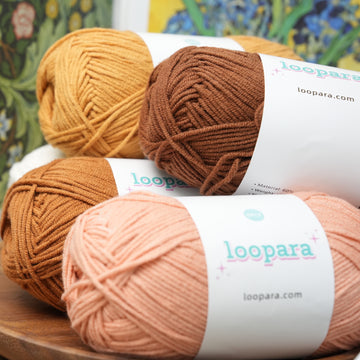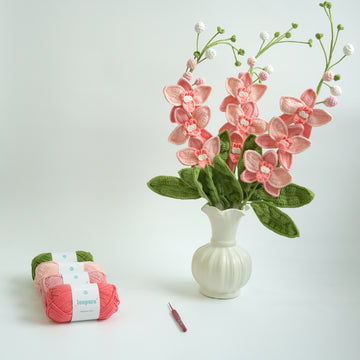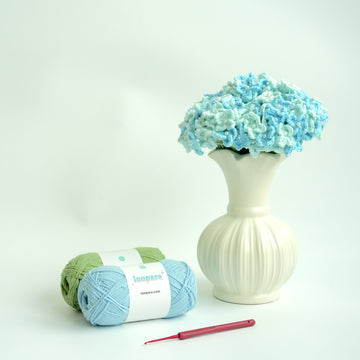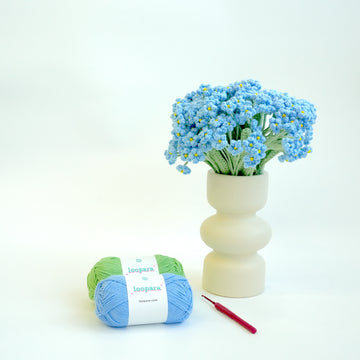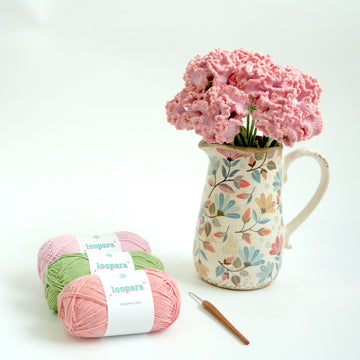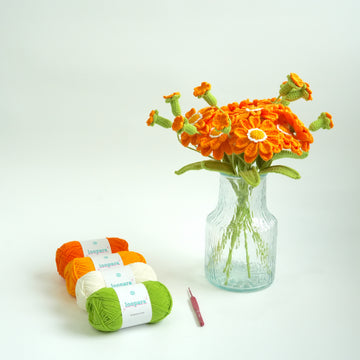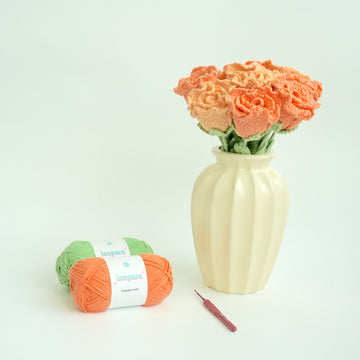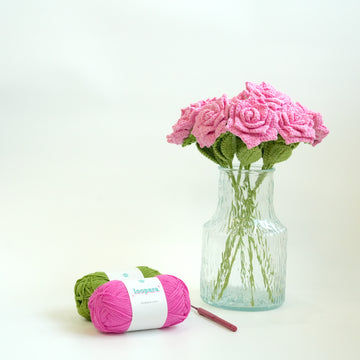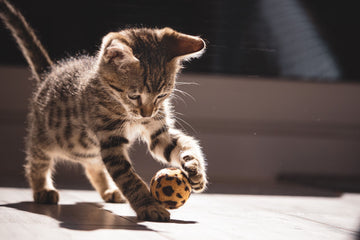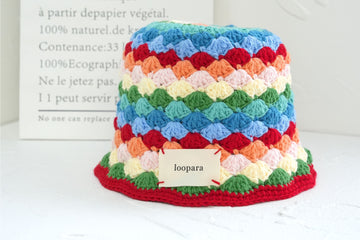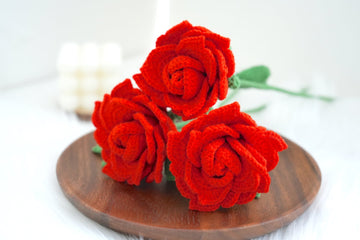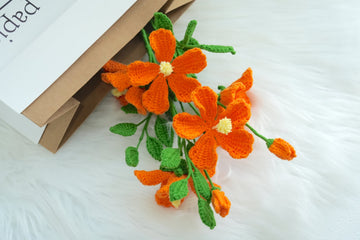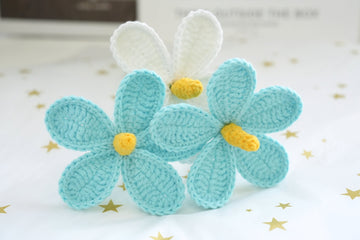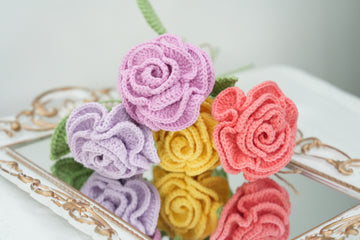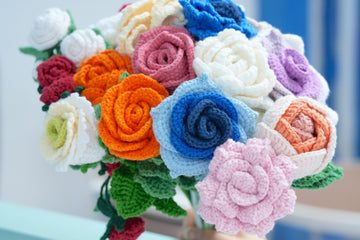Crochet hooks come in very different sizes. So how do you know which one to use for your project?
We’re going to look at crochet hook sizes and how they match up against different yarn weights. We’ll help you pick a size that will suit your project. And we’ll share some other hints and tips to find the perfect hook.
Ready to learn more? Then step this way!
Why does crochet hook size matter?
There are various different ways of describing the size of crochet hooks. But whatever system is used, what’s being measured is the diameter of the shaft.
This is what will determine the size of the stitches. And that means it’s important to choose the right sized hook for the yarn you’re working with.
Choose a hook that’s too small for a chunky yarn, and you’ll find your stitches are tight and cramped. And if you’re making a garment, it will end up smaller than it was intended to be.
If the hook is too big for the yarn, your pattern will be more open than you expected. That can be fine if you’re making a lacey shawl. But if you’re crocheting something you want to hold its shape – amigurumi, for example – your fabric will be too floppy.
A bigger hook than recommended when you’re making clothing will also give you a finished item that’s bigger size than you wanted.
Crochet hooks can vary in the length of the shaft, as well as its diameter. Shorter hooks can be easier to maneuver, while longer ones will allow you to work a number of wraps at the same time. But there aren’t standard measurements for this.
Different approaches to measuring crochet hook size
Although they’re all measuring the same thing, the way crochet hook sizes are described differs around the world.
The main systems are US, UK, metric and Japanese. Here’s how to tell the difference:
- If the hook size includes a letter, it’s a US size
- If it consists of only a number, it’s either a UK or a Japanese size
- If it’s followed by “mm” (for millimeters), it’s a metric size. (For larger hook sizes, the Japanese system uses metric too.)
Some UK patterns use metric measurements, while others use the imperial system of numbers. Metric began to be used in the UK in the 1970s, so British patterns older than that will always use imperial sizing.
Converting crochet hook sizes
The different sizing systems don’t always map across to one another perfectly. A 2.25 mm crochet hook in the metric system, for example, falls somewhere between a B and C hook in the American system.
If you’re trying to convert from one system to the other, and find you don’t have a direct match, don’t worry. Making up gauge swatches with the nearest equivalents will help you decide whether to go up or down a size.
The table below sets out the crochet hook sizes in the four main systems.
Crochet Hook Size Chart (US & UK)
| Millimeter Size | US Size |
|---|---|
| 2.25 mm | B-1 |
| 2.5 mm | -- |
| 2.75 mm | C-2 |
| 3.125 mm | D |
| 3.25 mm | D-3 |
| 3.5 mm | E-4 |
| 3.75 mm | F-5 |
| 4 mm | G-6 |
| 4.25 mm | G |
| 4.5 mm | 7 |
| 5 mm | H-8 |
| 5.25 mm | I |
| 5.5 mm | I-9 |
| 5.75 mm | J |
| 6 mm | J-10 |
| 6.5 mm | K-10½ |
| 7 mm | -- |
| 8 mm | L-11 |
| 9 mm | M/N-13 |
| 10 mm | N/P-15 |
| 11.5 mm | P-16 |
| 12 mm | -- |
| 15 mm | P/Q |
| 15.75 mm | Q |
| 16 mm | Q |
| 19 mm | S |
| 25 mm | T/U/X |
| 30 mm | T/X |
Identifying the size of your crochet hook
Most crochet hooks have their size printed on the handle. But if it’s not there, you can find out the size yourself using a handy gadget called a crochet hook gauge.
This is a thin piece of plastic with slots around the edges. The slots correspond to the different hook sizes. All you need to do is insert your hook into a slot. If it fits, keep sliding it into smaller and smaller slots. The smallest slot it will slide into is its size.
You can now read the measurement on the gauge for that slot. Hey presto, you have your crochet hook size.
Choosing the right crochet hook size for your project
If you’re using a pattern, it will state the recommended hook size. But if you’re going it alone, you’ll need to think about the weight of the yarn you’re using, and the effect you want to create.
Generally speaking, heavier – i.e. thicker – yarns will need a bigger crochet hook. But you can create different effects with different hook and yarn pairings.
A fine yarn worked on a large hook will give you a light, lacey fabric. A thicker yarn worked on a smaller hook will give you a fabric that’s more rigid.
If you’re just starting out and don’t feel ready to experiment, you can use some standard yarn and crochet hook pairings. The table below sets out recommended crochet hook sizes for different yarn weights. (The weight categories are the ones used by the Craft Yarn Council.)
Crochet Hook Sizes and Yarn Weight Chart
| Yarn weight | Hook size - US | Hook size - UK | Hook size - metric | Hook size - Japan |
|---|---|---|---|---|
| 0 – lace | B | 14, 13 | 1.5mm – 2.25mm | 2/0, 3/0 |
| 1 – super-fine | B, C | 13, 12, 11 | 2.25mm – 3mm | 3/0, 4/0, 5/0 |
| 2 – fine | B, C, D, E | 12, 11, 10, 9 | 2.5mm – 3.5mm | 4/0, 5/0, 6/0 |
| 3 – light | E, F, G | 9, 8, 7 | 3.5mm – 4.5mm | 6/0, 7/0, 7.5/0 |
| 4 – medium | G, H, I | 7, 6, 5 | 4.5mm – 5.5mm | 7.5/0, 8/0, 9/0 |
| 5 – bulky | I, J | 5, 4 | 5.5mm – 6.5mm | 9/0, 10/0 |
| 6 – super-bulky | K, L, M | 2, 0, 00 | 6.5mm – 9mm | 7-jumbo, 8-jumbo, 9-jumbo |
| 7 – jumbo | M, N | 00, 000 | 9mm+ | 10-jumbo |
Using a gauge swatch to check crochet hook size
Whenever you start a new project, it’s a good idea to make up a gauge swatch with your chosen yarn and hook. That will allow you to see how they work together and to check the tension.
With a gauge swatch, you measure the number of stitches and rows in a given area. That’s usually a square 4 inches by 4 inches (10 centimeters by 10 centimeters if you’re using metric).
Making your gauge swatch larger than this will allow you to check the tension in the middle, where it’s likely to be more consistent.
If you find there are more stitches in the row than it states in the pattern, your tension is too tight. Using a larger crochet hook will loosen it up.
If there are fewer stitches in the row than there should be, your tension is too loose. Try going down a size with your crochet hook to produce smaller, tighter stitches.
Crochet hook size and stitch size
We’ve seen that larger crochet hooks produce larger stitches. But going up a size with your hook won’t necessarily affect the height and width of your stitches equally.
One keen crocheter experimented with different hook sizes and the double crochet stitch. They found that going up a hook size affected the width of the stitch more than the height. Or to put it another way, hook size had a bigger influence on the stitch gauge than the row gauge.
Of course, the way you hold the yarn will also influence your gauge. A firmer hold will result in smaller, tighter stitches.
In other words, your technique will work alongside your choice of crochet hook to determine you gauge. That’s why (and excuse us for sounding like a broken record!) making a gauge swatch is so useful.
Other elements of the “right” crochet hook
Whilst the size of a crochet hook is important, it’s not the only thing to consider. You’ll also want to think about:
- the style of your hook – inline or tapered
- its material – steel, aluminum, acrylic, bamboo or wood.
The difference between inline and tapered crochet hooks lies in their heads. With inline hooks, the head is aligned with the shaft, while with tapered hooks the head sticks out beyond it. The heads of inline hooks are pointier too, and the throat is deeper than on tapered hooks.
Which style you choose is up to you. Some people say inline hooks work better for crocheters who hold their hook like a pen, with tapered hooks better for knife-grippers. But the best approach is to experiment with both and see which you prefer.
It’s a similar story when it comes to the material from which the crochet hook is made. All have their pros and cons in terms of flexibility, strength, and ease of use. Don’t be afraid to experiment to find what works for you.
Crochet hook sizes: a quickfire summary
Crochet hooks come in a wide range of different sizes. Generally speaking, the thicker the yarn, the larger the recommended hook size.
But you can get different effects with different hook and yarn combinations. All other things being equal, a larger hook will give you bigger, more open stitches than a smaller one.
Making a gauge swatch before you get started will help you decide whether your hook and yarn combination will work for your project.


